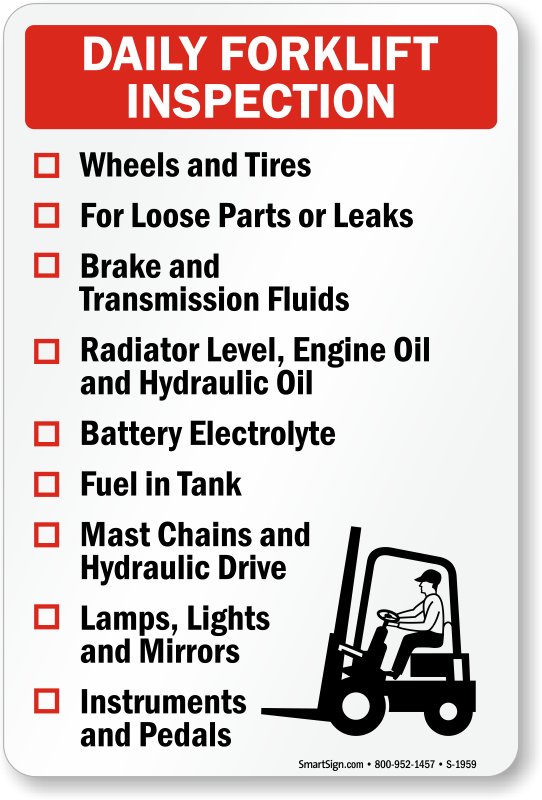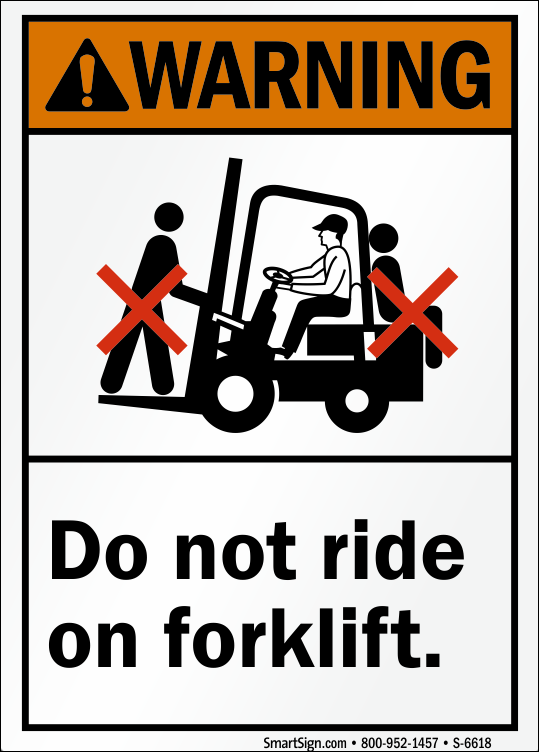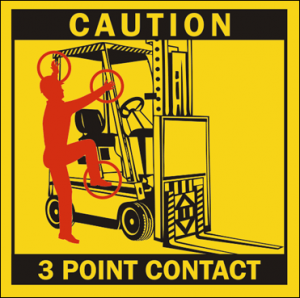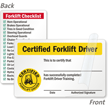Forklift Safety Inspection: Quick Guide
We’ve already given you a brief on how to conduct a pre-start forklift inspection. Now here’s your complete A to Z guide on Forklift Safety Inspection. Among the many forklift inspection requirements, one key requirement is that only operators who have been trained and evaluated in accordance with OSHA standards should inspect forklifts.
Forklift inspection can be divided into four major stages:
- Pre-operational Inspection
- Operational Inspection
- Removal from service
- Maintenance
In this post, we will discuss forklift inspection requirements in detail for each of these phases. Forklift operators, safety managers, facility heads should also refer OSHA standard 1910.178 for all the safety requirements.
Pre-operational inspection
Pre-operational forklift inspection should be done at least daily before starting the forklift. For those forklifts which work 24×7, the inspection must be performed after each shift. This pre-operational inspection can be done visually when the key is off.
- First, the inspector needs to check the fluid levels of oil, water, and hydraulic fluids.
- Next look out for any leaks, cracks, or visible defects in hydraulic hoses or tension in mast chains.
- After this, inspect tire condition, pressure and look for any cuts and gouges.
- Next step is to check fork condition including the top clip retaining pin and heel.
- Then, check the load backrest extension and see if finger guards are attached.
Also, check whether safety signs and nameplates are in place and clearly legible even from a distance. Match the information on the nameplate with the model, serial numbers and attachments. We recommend these No Riding and 3 Point Contact Labels on the powered industrial trucks.
- Also check if operator manual is present and is legible.
- Now check for grease and debris in the operator compartment.
- See that all safety devices like the seat belt is in proper working condition.

This is our best-seller reminder sign. Inspection checklist can be marked daily with an erasable marker.
Each type of forklift is unique and checklists pertinent to each type should be modified accordingly. Following are some specialized forklifts listed with additional items to be checked during inspection:
Electric Forklifts
- Cables and connectors for frayed or exposed wires
- Battery restraints
- Electrolyte levels
- Hood latch

Always use personal protective equipment such as a face shield, rubber apron, and rubber gloves when checking electrolyte.
Internal Combustion Forklifts
- Engine oil
- Brake reservoir
- Engine coolant
- Air filter
- Belts and hoses
- Radiator
- Hood latch
- Properly mounted tank
- Pressure relief valve pointing up
- Hose and connectors
- Tank restraint brackets
- Tank for dents and cracks
- Tank fits within profile of truck
- Leaks
Remember if a forklift is found to be defective or needs repair or is unsafe to use, it should be taken out of service immediately.

Use a form type label to keep a record of all the periodic forklift inspections
Operational inspection
After completing pre-operational inspection, operators should start the engine and conduct an operational inspection of the forklift. Primarily it should be noted if any unusual noises or vibrations are coming from the forklift, they should be reported immediately. Following things should be checked for safety during the operational inspection –
- Check if the accelerator or direction control pedal is working smoothly.
- Check Inch control (if equipped).
- Both service and parking brakes should work smoothly.
- Steering should function smoothly.
- Drive control: forward and reverse should be checked for smooth functioning.
- Tilt control: forward and back should be checked for smooth functioning.
- Hoist and lowering control should function smoothly.
- Check the operation of attachment control.
- Check the functioning of horn and lights.
- Functioning of heater, defroster, and wipers in the cab (if equipped).
- Gauges: Functioning of Ammeter, engine oil pressure, Hour Meter, fuel level, temperature, and instrument monitors.
- Back-up alarm (if equipped) should be checked.
- Check the operation of Hour meter.
- Battery Discharge Indicator should be functioning.
Removal from service
While driving the forklift, if the operator faces any of the following conditions, they must stop, park the vehicle and get assistance –
- Mechanical breakdown – If the forklift is not in safe condition or found with defects, it should be removed from service.
- Fire – If there are hazardous sparks or flames from the exhaust system, the forklift should be discontinued from service till it is repaired.
- Overheating – When the temperature of any part of the forklift increases beyond normal, the vehicle should be removed from service.
- Leakage – No forklift shall be operated with a leak in the fuel system.
Maintenance
Periodic maintenance is very important for the safe operation of forklifts.
- Try to keep forklifts in clean condition, free of lint, excess oil, and grease.
- Use non-combustible agents for cleaning trucks.
- High flash point (at or above 100° F) solvents may be used. Do not use low flash point (below 100° F) solvents.
- Take recommended precautions regarding toxicity, ventilation and fire hazards.
- All repair problems should be reported to the supervisor.
- Preventive maintenance should be performed only according to manufacturer’s scheduled recommendations.
Category: Resources

















